
 |
|
|
#1 |
|
All the news that's fit to excerpt
Name: newsie
Location: who knows?
Join Date: Jun 2008 Motorcycle(s): only digital replicas Posts: Too much.
|
[motorcycle.com] - A Taste Of American Supercamp
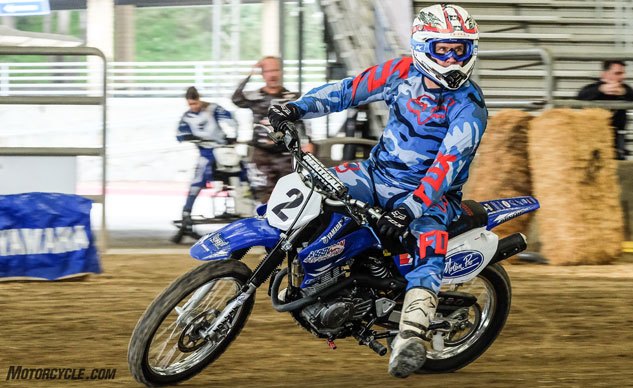 For 20 years, American Supercamp has been on a mission to teach the riding techniques flat-track racers use. In the process, they’ve been showing motorcyclists how challenging and fun flat-track racing is. Flat track is much more than just motocross without the jumps. Riders must constantly manage speed through sliding on corner entry and tire grip with throttle control on the exit to get a clean lap. So, American Supercamp gathers groups of riders of varying ability levels at facilities throughout the country and invites them to play in the dirt. Only this isn’t unorganized free play, it is a step-by-step program developed by former flat-tracker and AMA Pro Road Racer Danny Walker along with his partner, seven-time AMA Pro Flat Track Champion Chris Carr. While the initial goal was to teach riders flat-track racing skills, two decades of teaching experience has shown that it makes all motorcyclists – no matter what their chosen form of the sport – better riders. To give members of the media an idea of what American Supercamp is about, Walker and Carr distilled the program down into a half-day experience, a sampler platter designed to whet our appetites. They were more than successful. Here’s why. 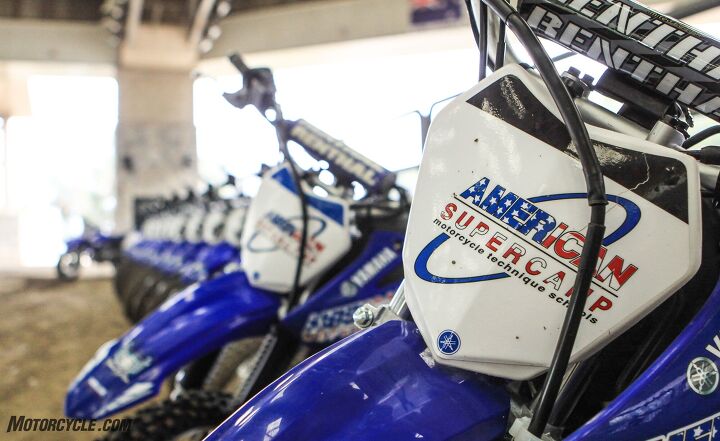 American Supercamp uses Yamaha TT-R125s as their student motorcycles. Since the program is designed for riders of all skill/experience levels, the non-intimidating power delivery keeps the focus on riding technique. American Supercamp uses Yamaha TT-R125s as their student motorcycles. Since the program is designed for riders of all skill/experience levels, the non-intimidating power delivery keeps the focus on riding technique.The layout for my introduction to Supercamp is a flat track writ small: a tiny dirt oval with a fleet of TT-R125s to circulate it. While you can use your own riding gear if you like, Supercamp has enough gear to supply all its students from head-to-toe and fingertips. Then there are the coaches. Along with the aforementioned Walker and Carr, Supercamp has a regular team of name-brand racers and young hot-shoes rotating through the staff at the schools. My half-day featured none other than three-time Grand National Champion Jared Mees and current Grand National Champion Bryan Smith. Also in attendance were Shayna Texter and Ryan Wells. Let’s just say that the 2017 edition of the newly named American Flat Track series was well represented. This group of experts was friendly, approachable, and a treasure trove of flat track riding information. The centerpiece of the program is learning how to corner in the limited traction provided by a packed dirt surface. To this end, four steps to proper cornering are outlined. While nothing earth shattering and not terribly different from the slow, look, lean, and roll I was taught in my MSF class a quarter century ago, the steps are:
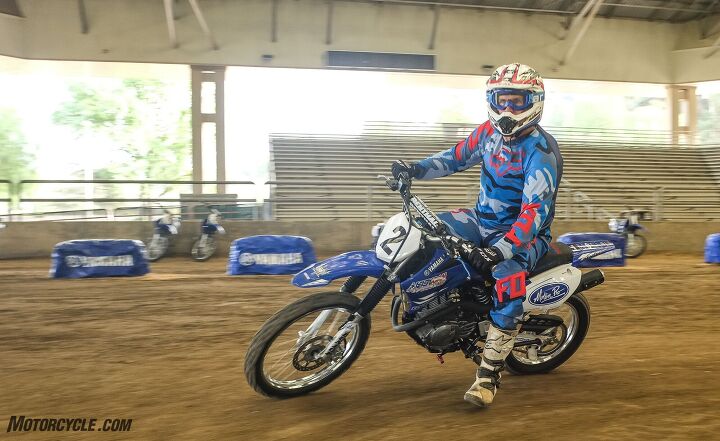 My body position is getting better, but I kept dropping my outside elbow, an action that got me poked and prodded a few times during the day. My body position is getting better, but I kept dropping my outside elbow, an action that got me poked and prodded a few times during the day.In the environment of the corral, driving into the corner is, oddly, the most important. This makes sense once you consider that the TTR–125s we’re riding produce a maximum of 10 hp. You need to carry enough speed into the turn to be able to perform the next two steps. Otherwise, the bike might tip over from lack of momentum. So, the coaches start by making sure that we’re driving into the corner. Squeezing the brake sounds weird in this environment, since using the front brake will put you on your ass in the blink of an eye – as one rider demonstrated right in front of me about three laps into the first session. Instead, the squeeze is meant to emphasize the smooth nature of the rear brake application. The pressure builds gradually as you approach the corner and releases gradually as the bike begins to bend in towards the point where the primary direction change takes place. Managing the release of the rear brake proved to be one of my challenges. Release it too early, and the bike wants to run wide. Release it too slowly, and the back end wants to come around and spit you off. Why would this prove to be difficult? Well, because so much of my concentration was spent on body positioning.  Shayna Texter preparing to put me in my place. At least my form here is close to correct. Shayna Texter preparing to put me in my place. At least my form here is close to correct.After years of roadracing, attending riding schools, and track riding, my body positioning was all wrong for dirt tracking. I’d spent countless hours getting my body to the inside of the bike’s center line, placing my head low and forward with my elbows out – Ben Spies-style. Well, all that goes out the window. On the TTR, I needed to sit upright on the front of the seat, only not erect, but slouching, too. My butt should be shifted to the outside of the seat, putting the edge of the seat in my crack. Elbows need to be up with the inside arm straight, making the bike lean underneath me. Any time I made a slight mistake and my instincts took over, they placed me in the exactly wrong position, rewarding me with a front end that would slip, threatening to low-side me. While these techniques may not seem like much for someone who has lots of dirt experience, they totally went against my hard-earned pavement-focused skill set. But that’s not all. One of the body-placement skills that Carr stresses is pivoting your hips around the gas cap. If you think of the gas cap as the pivot point and your hips as a pendulum, your pelvis needs to pivot forward around the outside of the tank to enable the bike to lean underneath you. Since you want your outside leg snug up against the tank to push the bike down into the corner, pivoting really helps to do it, though it requires spreading my legs in an unfamiliar way. 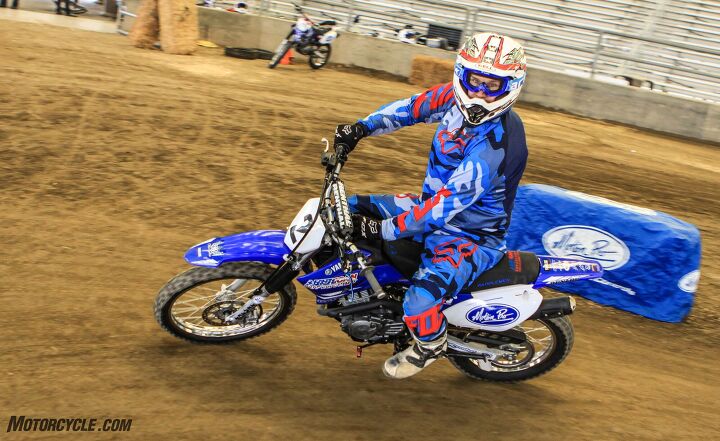 One of the exercises was riding with my left hand on the gas cap. It’s surprising how unsettling this was initially but how much it improved my smoothness during steering inputs. One of the exercises was riding with my left hand on the gas cap. It’s surprising how unsettling this was initially but how much it improved my smoothness during steering inputs.While this is all going on, I still needed to remember to use proper braking technique and arm positioning. And the slouch. Don’t forget the slouch. A great example of the level of focus delivered by the coaches comes from when we switched to circling the track in a clockwise direction. I was struggling a bit on turn-in, and Carr, while riding behind me, was able to determine that it was my wrist position on the throttle. He pulled me aside to suggest a 20-degree forward shift of position of my throttle hand coupled with holding the grip with my thumb and index finger which, as a point of reference, would allow my remaining fingers to point in the direction I wanted to go. On the first turn after our trackside conference, my right turns were transformed to the point that I was occasionally leaning over so far that I was dragging my toes in the corner as I was releasing the brake. The last of the four steps in cornering comes naturally to all motorcyclists: twisting the throttle. However, there are some tricks to this step, too. The TTRs are equipped with dirt tires on the front and street tires out back to force the students into learning how to manage traction. Get too aggressive with the throttle before standing the bike up, placing the meat of the tire on the ground, and the bike is going to squirm and run wide – or put you down in the dirt. When this is considered, all the emphasis on getting the turning completed quickly makes sense. It gets the bike upright sooner and actually lengthens the straight, allowing more time on the throttle. 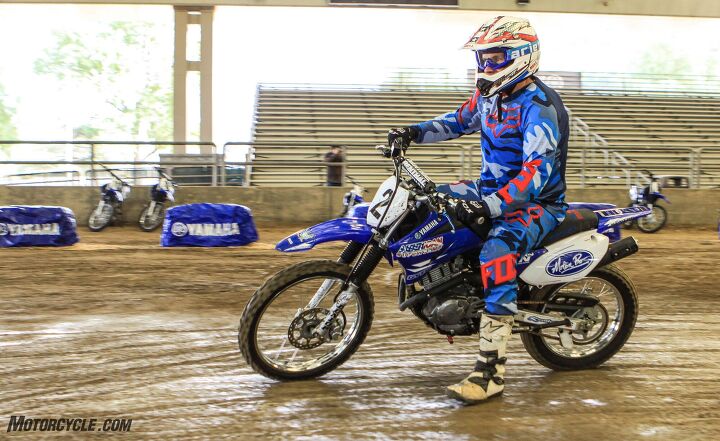 Wetting down the dirt brings every mistake to the forefront. Let off the brake too early or abruptly, and the bike pushes wide. Give it too much throttle too soon, and you’ll end up rolling in the mud. Wetting down the dirt brings every mistake to the forefront. Let off the brake too early or abruptly, and the bike pushes wide. Give it too much throttle too soon, and you’ll end up rolling in the mud.While all of the exercises we sampled were designed to develop certain aspects of the four steps to cornering like a dirt tracker, the feature I benefitted the most from was following the pros around. Before they would leave me behind and move on to the next student, I had a lap or so of following their lines and mimicking their body position. The reason this is such a powerful teaching tool is that it helped to get me out of my head for a moment and just let my body parrot what was happening in front of me. When combined with the verbal coaching, this felt like a good balance of letting me learn how to do the technique on my own and giving me individual guidance. I’ve spent most of this article discussing the techniques taught at American Supercamp. Now, I want to focus on how fun it was. Each new exercise did stress a different skill, and the changes between riding sessions kept the day interesting. Imagine having a seven-time Grand National Champion wielding a giant, padded club as a means of getting you to turn early and quickly so that your line was tight at the corner’s exit. At one point during this session, I was laughing so hard that I completely blew the corner, going wide, and had to duck the club of correction as Carr tried to whack me in the back. Also, having the instructors ride by and poke my arm when I dropped my elbows or slap my hip when I didn’t shift it far enough forward around the gas cap helped to keep me focused – and smiling. 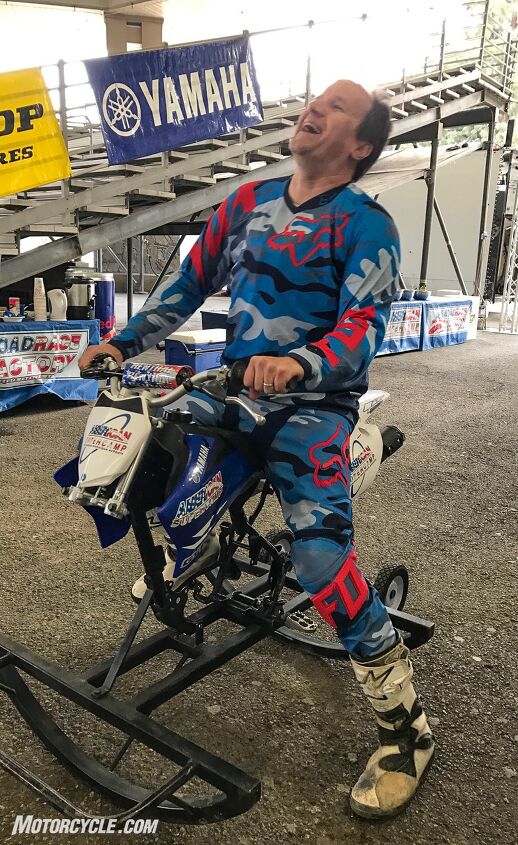 How much fun is American Supercamp? Well, laughing at your mistakes makes it even better. Here I am falling off the bike that is set up to show me how to lean the bike beneath my upright body because I keep leading with my shoulders to the inside of the turn. How much fun is American Supercamp? Well, laughing at your mistakes makes it even better. Here I am falling off the bike that is set up to show me how to lean the bike beneath my upright body because I keep leading with my shoulders to the inside of the turn.During one of the water breaks, Carr asked me if I was having fun, and I replied with an emphatic yes. I told him that I’d enjoyed the sampler, and now I wanted to partake of the full meal. A half day just isn’t enough; a full day probably wouldn’t be, either. For me (and I think for many people), acquiring new skills is a series of plateaus followed by quick increases, as the techniques click into place. I could see the first day being the acquisition of the skills with the second day being a refinement and expansion of them. When I got home and began to read over the schedule for upcoming Supercamps, I was shocked to discover that the two-day classes only cost $650 plus a $75-$100 discount available for folks who registered early. The classes are divided into one for non-racers and one for racers. While the curriculum taught is exactly the same, I was told that the level of aggression usually exhibited by the fast group makes having separate classes a good idea. American Supercamp represents a solid value for the money. They provide the bikes, the gear, and quality coaching. They even bring in lunch for everyone. If my level of exhaustion after a mere three hours was any indicator, you’ll be good and tired after a full day in the saddle – hitting a top speed of maybe 20 mph. Time and money well spent, not just for the skills I honed, but also for the sheer fun of it. Find out more at American Supercamp’s website. 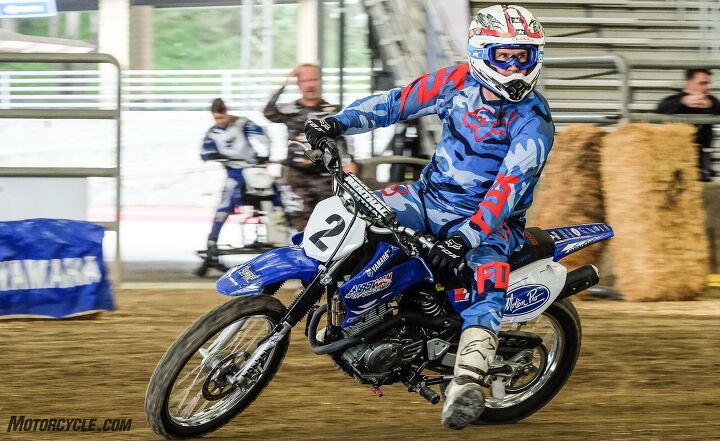 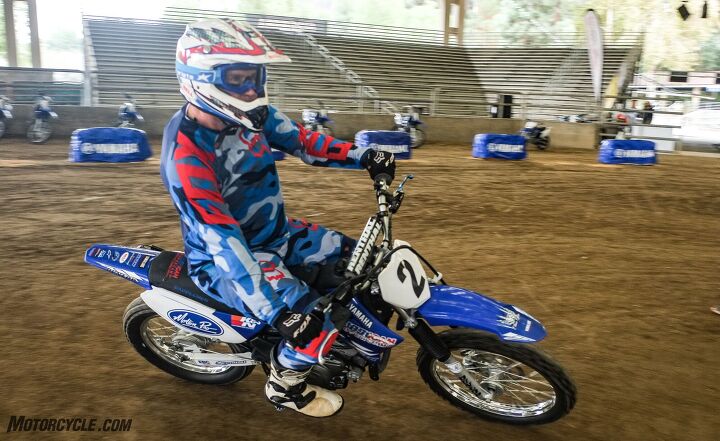 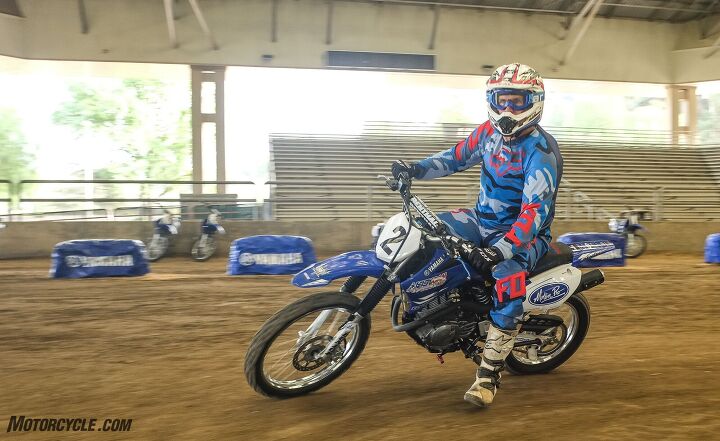 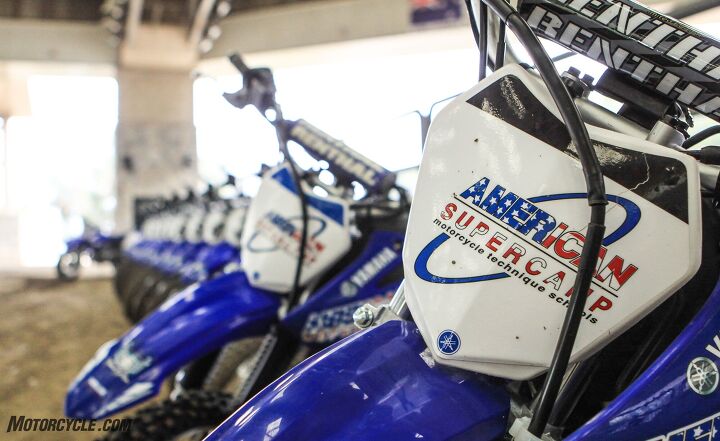 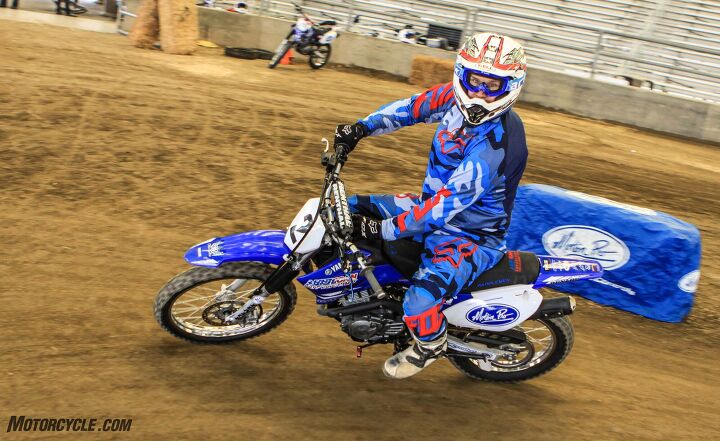 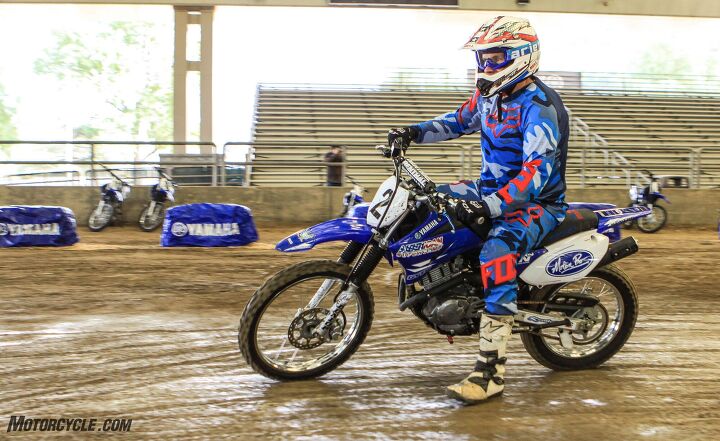 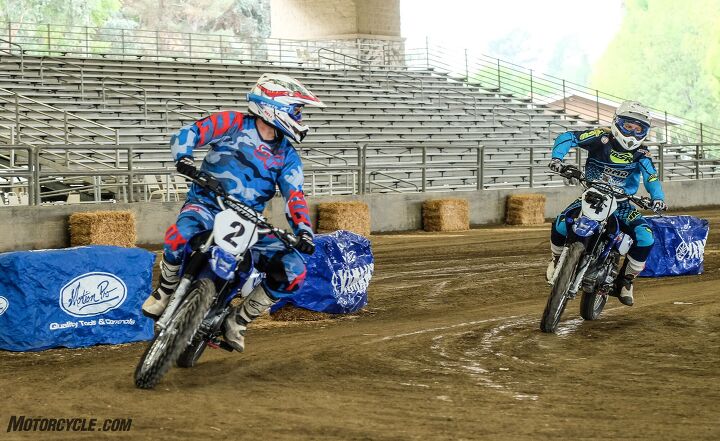 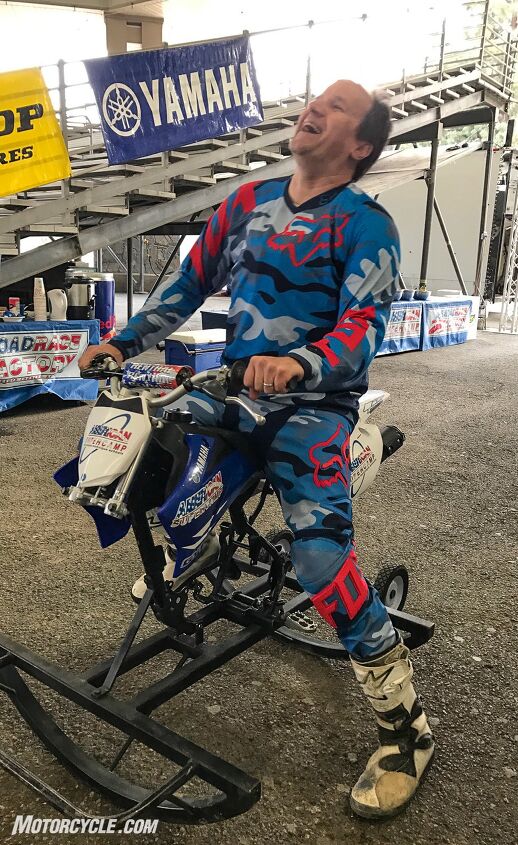 A Taste Of American Supercamp appeared first on Motorcycle.com. A Taste Of American Supercamp appeared first on Motorcycle.com.Click here for full story...
__________________________________________________
I'm a bot. I don't need no stinkin' signature... |
|
|

|
 |
 Similar Threads
Similar Threads
|
||||
| Thread | Thread Starter | Forum | Replies | Last Post |
| [roadracingworld.com] - Paasch, Yates Invited To Participate In American Supercamp Yo | Ninjette Newsbot | Motorcycling News | 0 | October 27th, 2015 10:00 AM |
| [cyclenews.com] - American Supercamp Under the Lights!! | Ninjette Newsbot | Motorcycling News | 0 | September 4th, 2015 10:40 PM |
| [motorcycle-usa.com] - American Supercamp Changes Calistoga Date | Ninjette Newsbot | Motorcycling News | 0 | April 24th, 2013 02:20 PM |
| [roadracingworld.com] - American Supercamp Offering More One-Day Program Options In 2 | Ninjette Newsbot | Motorcycling News | 0 | November 8th, 2012 09:40 AM |
| [topix.net] - American Supercamp introduces ProCamp | Ninjette Newsbot | Motorcycling News | 0 | March 19th, 2009 09:51 AM |
|
|